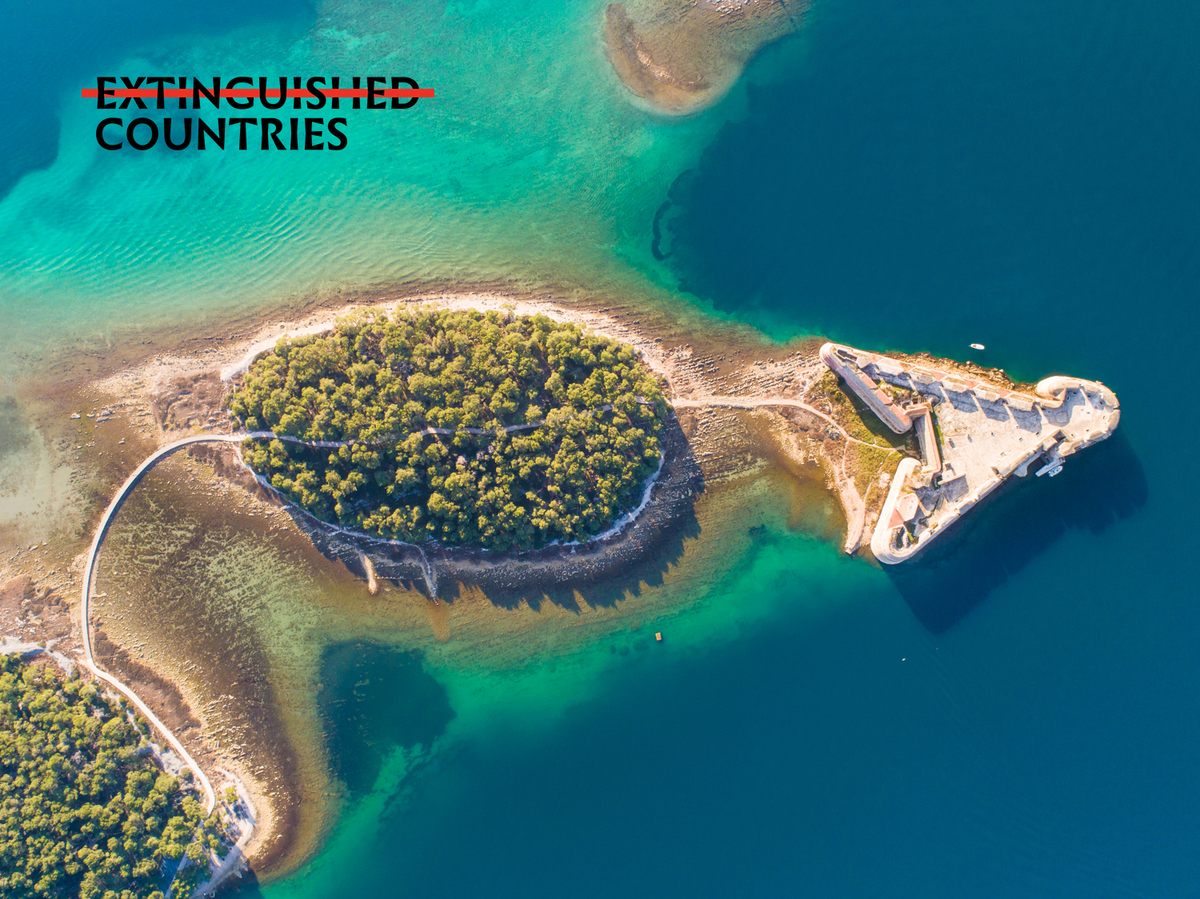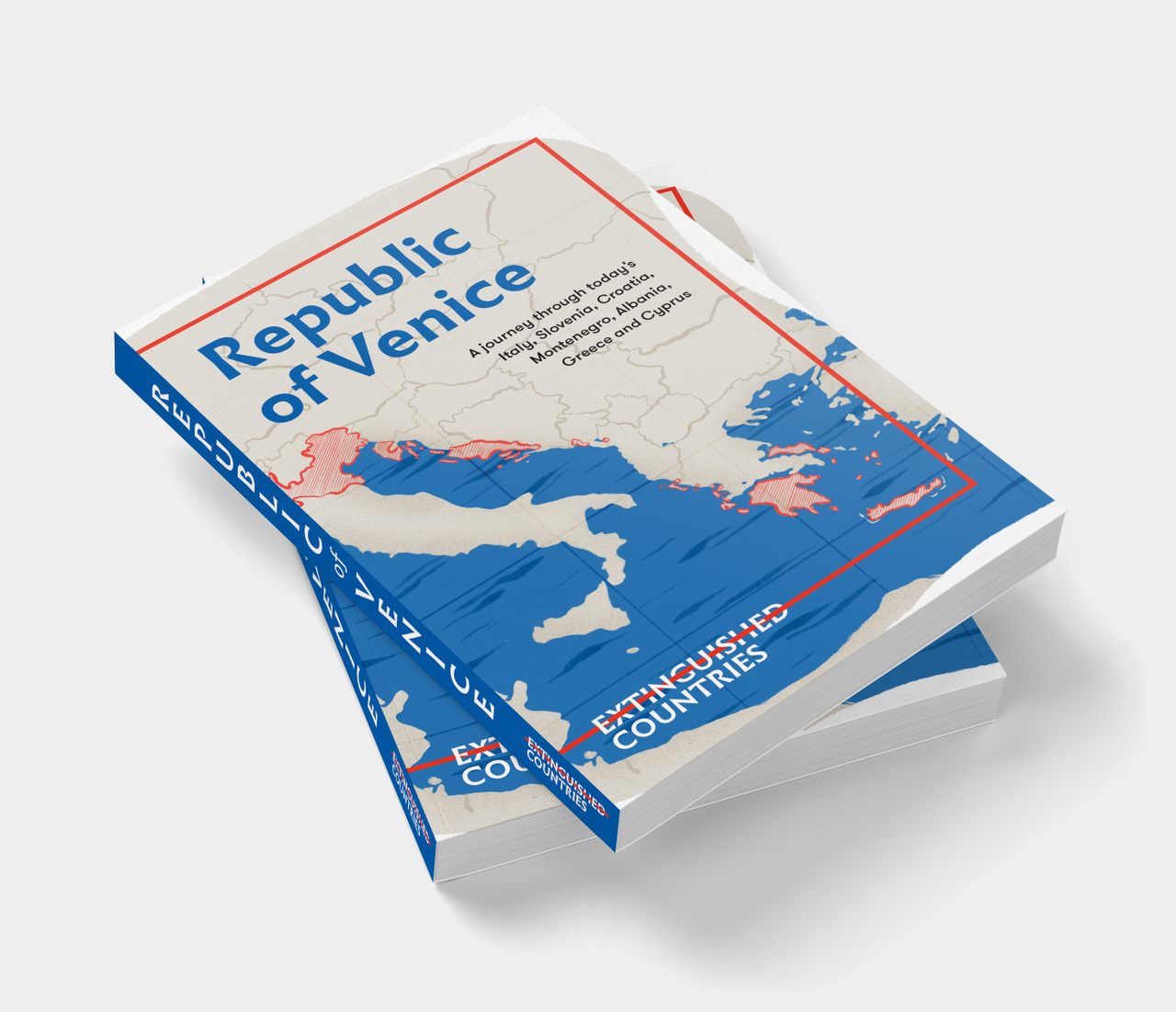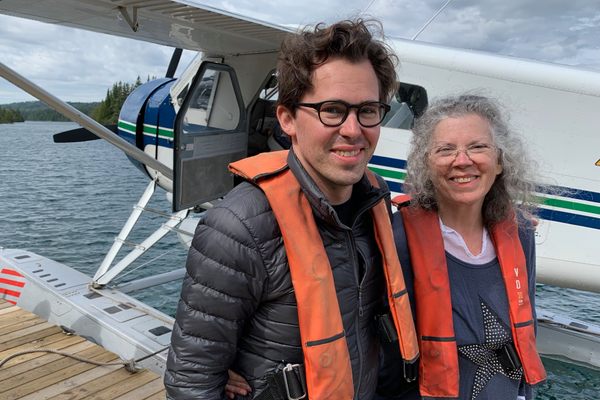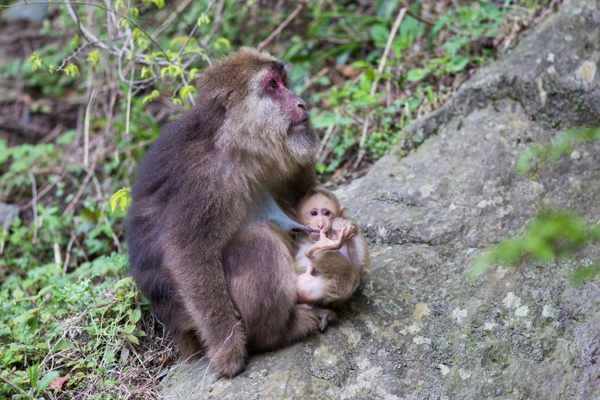The Republic of Venice Died in 1797. Now You Can Visit It.
Meet Giovanni Vale, your travel guide to countries that no longer exist.
Travel writing is almost always about documenting a place as it is, now, with all of its obvious contours and, if you’re lucky, its hidden gems to be discovered. But sometimes the genre goes beyond, and before, the present manifestation of a place. Sometimes it elucidates how, and when, that place became what it is today.
From Rick Steves to Lavinia Spalding, a handful of travel writers remind us that few things in life are forever—even those that can seem the most impervious to change.
Now, the Extinguished Countries project is seeking to reverse engineer that enterprise: Journalist Giovanni Vale and his team have mapped the modern remnants of the ancient Republic of Venice, which stretches across seven European nations. Their final product is a guidebook to the Venetian republic—the first in a series that will examine the modern world through the lens of its extinct predecessors.
Some kingdoms and empires took centuries to decline into oblivion; others were snuffed out in a day. No matter the cause of their disappearance, the Extinguished Countries project serves to highlight the dead-and-gone nations that were instrumental in the creation of the modern world.
Atlas Obscura recently spoke with Vale about the new guidebook, now available for pre-order.
Why launch a series of guidebooks on countries and states that no longer exist?
I’ve been a journalist and travel writer for the past six years, working in this guidebook universe, and I’ve noticed how it’s changing. Guidebooks [today] have more and more experiences, or interviews with locals, and [fewer] lists of hotels or restaurants.
One day I was having a conversation with my girlfriend—now wife—on the Croatian coast. She’s Croatian and I’m Italian. We were discussing local history … meaning the Balkans … There were many extinguished countries [here]—former empires, which had left a visible heritage. We … said “Wouldn’t it be nice to have guidebooks of countries that no longer exist?
[But we weren’t sure what form one would take.] Would it be something you could travel with? Or would it just be a history book?”
To give you a concrete example why in this region, especially, this is relevant, imagine that in Croatia, a small country of four million people, you have three different ways of saying “towel.” On the coast, you can use a word that comes from the Republic of Venice, a Venetian-Italian word; a Slavic word in the center [of the country]; and a Turkish word in the areas that were under the Ottoman Empire for centuries.
So far, this has been seen as a problem in the Balkans: too much history. I think Churchill [said] the Balkans produced more history than they can consume. Well, sure—there’s a lot of diversity in the region. But it’s a cultural richness.
This is how it all started.
What other “extinguished” countries are you documenting?
We decided to start with the Republic of Venice, which is not well known far from the Mediterranean. The modern Republic of Venice would be seven countries: parts of Italy, Slovenia, Croatia, Montenegro, Albania, Greece, and Cyprus.
We’ve many others in mind, but haven’t decided. We’ve fantasized about Andalusia, which was an Arabic state until Spanish people reconquered the south of Spain. And a lot of mosques are still there. Bigger countries could be the Russian Empire, going into all of Russia and parts of Eastern Europe. [In] the 21st century, the U.S.S.R., and in the Balkans, Yugoslavia—both left a heritage even if they were shorter-lived.
You have the Ottoman Empire … [as well as] the Austro-Hungarian Empire. Many [of these places] are European. But many are in South America, for example—all the kingdoms that existed before Europeans.

What’s it like to do research for a guidebook on an empire that disappeared centuries ago?
From the beginning, when I was discussing with my wife, we thought, “Maybe this is too geeky. This is like a history book, it might be boring.”
But we found so many fun facts, anecdotes, and stories … Take the capital of Cyprus, Nicosia. It’s considered the last divided city in Europe: Part is Turkish, and part is Greek Cypriot. [But both halves are] surrounded by these Venetian walls in the shape of a star, if you look from above. Both municipalities use the star as a symbol in their logo. And everybody’s attached to those walls, even if they forget their story. They were built in a rush by the Venetians in what they hoped would stop the Ottomans from conquering the city five centuries ago. (It didn’t work.)
Or in Venice, you have this area called Ghetto. And that’s where the word “ghetto” comes from. Ghetto comes from the Venetian word gettare, which means “to throw.” In that area in the 16th century there was a foundry—people would throw things in the fire.
I’ve been [a political reporter] for the last six years. It’s really refreshing to [instead ask questions like], “What’s our identity? What do we have in common with our neighbors?”
We have this local dish with fish, very typical for the Croatian coast. But we found it’s also in Greece. Why? Well, those two places were both part of Venice for 600 years.

You mention that a lot of the reporting was with locals around what was once the Republic of Venice. How did you find your sources?
I started [by] finding the local cultural institutions in each city, and then one person leads to the next. Eventually I’d find a historian, or a cook who knows about local gastronomy. For example, I found this engineer who lives in a little town on the Croatian coast [that in the past was] famous for pirates. He’s very proud of that past, and today, the city is not really [publicizing] that heritage—they don’t have a museum. So [the engineer] decided to rebuild a pirate ship in his free time. The boat should sail again this summer, after like 800 years. And he’s done all that by himself.
Normally, every city, every region is very proud of [its] local history. And the local history is what I’m diving into. I’m not there for what people might expect. There might be a city where there’s an important industry—what the news [there] is about. But I’m coming in with questions about piracy. That’s what triggers people, and in a few minutes, everyone says, “You should speak with that guy.”
As the guidebook took shape, did it become clear whether it would be a travel utility, or a way for people to read about a place from their armchair?
You can keep a balance between the two things. In normal guidebooks you have a lot of descriptions in small print. In this guidebook there’s a few pages—a story—for each city, the history, the identity of the city, and then some text on the side that gives you some travel advice. For example, a restaurant where they still cook some traditional dish.
But I avoided lists of hotels and restaurants that don’t really have a story. People book accommodations through Airbnb, or whatever, and they don’t really need a list telling them about a four-star hotel.

Can you tell me a couple of your favorite stories of foods and places in the book?
When it comes to dishes, there are a couple I could mention. The first one is something called brudet. It’s brodetto in Italy, brudet in Croatia and Montenegro, and it becomes bourdeto in Greece. It’s a fish stew. It changes a bit. In Greece, in Corfu, it’s very spicy; they put paprika and chili peppers in it. In Croatia, it’s mild and more of a soup, and the same goes in Italy. And then there’s this small village in Croatia by the coast, where the same fish stew is done there with eel and frogs. Just eel and frogs. I don’t know why.
The second dish is pastitsada. It’s a meat dish. In Italy it’s pastissada, and it’s only in Verona, and done with horse meat and polenta, while in Croatia it’s beef and gnocchi. In Greece it’s again beef, but with spaghetti. When I was speaking with people in Corfu, they didn’t know it also existed in Croatia. And when I mentioned to people in Croatia that it existed in Corfu, they were surprised. They were like, “This is our traditional dish!” And I said “Yes, it is!”
In this sense, I believe the project can bring people closer. It’s not like “these guys stole our traditional dish.” No! You have your own traditional dish and recipe, but you share a past with your neighbor. For us today it may be hard to imagine. … Countries like Italy and the United States—they’ve been around for just a couple of centuries. The Republic of Venice existed for over 1,000 years. Of course they left these common traces.
What about places? I saw mention of some abandoned towns.
There’s this region in Croatia called Istria; it’s [near] Venice, basically across the sea. [Most of it] was under the Republic of Venice until the end of the republic. I was speaking over the phone with someone from the region, and … I had this map of Istria from the Republic of Venice. I was checking which towns were under Venice and which were under the Austro-Hungarian Empire.
And I asked him about this town, and that town, and then I asked about Dvigrad, another town. And he said, “No, there’s nobody in Dvigrad. It’s a ghost town.” … Turns out the town was abandoned due to the plague and some other reasons 400 years ago. And today, if you go there, you can see the ruins of more than 200 houses, the square, and the church. It’s not advertised because the local municipality didn’t receive permission from the ministry of culture to do something with it. You can do it on your own, but there are no tours.
It was funny to me because I was just doing research on towns, and had no idea there was a ghost town. Turns out my map was old.

What was the hardest part of building this project out?
There was an organizational challenge, because at some moments I had so many emails coming back, from Greece, from Cyprus, from Albania. I had to slow down the rhythm and start organizing everything.
At the beginning too, just reading and understanding the history. I’m a political journalist, and I write for travel, but I’m not a historian. I studied diplomacy at university, but not anything Middle-Aged. So I went through this 600-something-page book on the Republic of Venice. It was painful. But if I didn’t, I wouldn’t understand any story in the bigger picture of the republic.
You’re taking a bike trip from Venice to Dubrovnik as part of the project. What do you hope to get out of it?
Well, part of the project is a podcast … with a French colleague. We enjoyed the podcast so much that we thought, “OK, we’re doing the book [too].” He said many people like to cycle and listen to a story instead of reading it. As we’d [already] done the podcast, why wouldn’t we do something longer while traveling?
That’s where the idea started. To go from Venice, through the republic, and test out the guidebook. … We’ll interview people and make a [roughly 30-minute] podcast about the journey. And we can spread the word about the book to locals.
We’re doing a crowdfunding campaign now, and the book will be printed in autumn, in November. So we still have time to collect stories. The idea is to go through the extinguished country and see how the book works in the field.
What do you hope the public takes away from the project?
That the travelers with this book travel a bit differently. That they go slower, that they question what they’re going through, that they take time to go through [these places] with a different eye. And to experience the travel on two [levels]—being there in the present, but also understanding, through the book, how the city was in the past.
Europe at this moment is facing a rise in nationalism, and I’d like to show with this book that we’re all connected. [Y]ou cannot consider your own identity as something completely separate from other people. You definitely have something in common. And I’d like it if through … traveling, people can learn something about their neighbors and find out that we have things in common.
This interview has been edited and condensed for length and clarity.























Follow us on Twitter to get the latest on the world's hidden wonders.
Like us on Facebook to get the latest on the world's hidden wonders.
Follow us on Twitter Like us on Facebook